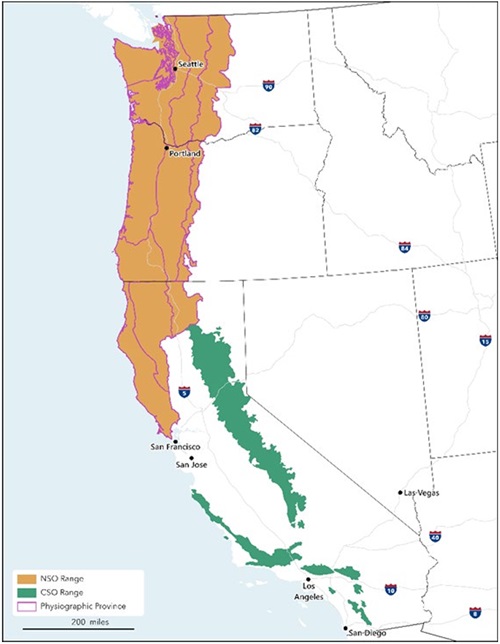

On this day, May 21, 2001, in Seattle, Wa., members of the Earth Liberation Front torched the Univ. of Washington's Center for Urban Horticulture causing about $6 million in damage. An Oregon tree farm owned by Jefferson Poplar Farms was also burned. four people were later convicted of taking part in the firebombing. One later committed suicide in prison.
Also on this day, May 21, 2002, The George W. Bush administration said it will allow new mining to resume on nearly one million acres of the Siskiyou region.
Also on this day, May 21, 2006, demolition crews destroyed the 499-foot cooling tower of the Trojan Nuclear Power Plant. Demolition of the containment dome was scheduled in 2008.
Also on this day, May 21, 1998, 15 year-old Kipland Kinkel killed one classmate and wounded 19 more at Thurston High School. His parents, William and Faith, were found shot dead at home and a 2nd student died the next day. He had been expelled from school the previous day for bringing a gun to school. Kinkel dropped an insanity plea in 1999 and pleaded guilty to four counts of murder and 26 counts of attempted murder. He was sentenced over 111 years in prison.
US Fish and Wildlife Service Releases Plan to Protect At-Risk Spotted Owls
The U.S. Fish and Wildlife Service is announcing its final environmental impact statement analyzing proposed
barred owl management alternatives to protect northern and California spotted owls in Washington, Oregon and California from invasive barred owls. The Service’s preferred alternative is the implementation of a proposed Barred Owl Management Strategy, which would result in the annual removal of less than one-half of 1% of the current North American barred owl population.
According to USFW, Northern spotted owl populations are rapidly declining due to competition with invasive barred owls and habitat loss. California spotted owls, which are proposed for
ESA listing, face a similar risk as barred owl populations continue to move south into their range.
“Barred owl management is not about one owl versus another,” said Service Oregon Office state supervisor Kessina Lee. “Without actively managing barred owls, northern spotted owls will likely go extinct in all or the majority of their range, despite decades of collaborative conservation efforts.”
If the proposed strategy is adopted and fully implemented, lethal removal of barred owls by trained professionals would occur in less than half of the areas where spotted and invasive barred owls co-exist within the northern spotted owl’s range; and would limit their invasion into the California spotted owl’s range. Public hunting of barred owls is not allowed under the proposed strategy and lead ammunition will not be used for any lethal removal actions.
A D V E R T I S E M E N T

A D V E R T I S E M E N T
“Barred owl removal, like all invasive species management, is not something the Service takes lightly,” said Lee. “The Service has a legal responsibility to do all it can to prevent the extinction of the federally listed northern spotted owl and support its recovery, while also addressing significant threats to California spotted owls.”
Barred owls are native to eastern North America but started moving west of the Mississippi River at the beginning of the 20th century. This expansion was likely due to human-induced changes in the Great Plains and northern boreal forest. As a result, barred owls now surpass northern spotted owls in numbers across most of California, Oregon, and Washington.

If the proposed strategy is adopted, the Service would receive a permit under the Migratory Bird Treaty Act. The Service could then designate interested Tribes, federal and state agencies, companies, or specific landowners to implement barred owl management on their lands if actions are consistent with the strategy, conditions of the permit, and state laws and policies. Those who implement the strategy will be accountable for annual monitoring and reporting.
The final EIS and proposed strategy reflect the input received throughout the scoping and public comment process, as well as feedback from cooperating agencies and Tribes. The Service expects to announce a final record of decision on the proposed strategy at least 30 days after the formal publication of the final EIS in the Federal Register.
More information is available on the Service’s
barred owl management website, including the draft and
final EIS,
proposed strategy and frequently asked questions. The final EIS will be available in the coming days in the Federal Register and at https://www.regulations.gov at Docket No. FWS-R1-ES-2022-0074.
--Staff Reports| Post Date: 2024-07-16 09:59:55 | Last Update: 2024-07-16 20:32:53 |
Spoiler alert: It’s going up
The federal minimum wage is the default wage in all states for most occupations that are involved in interstate commerce. A state may choose to set a minimum wage above or below the federal rate, but minimum wage earners receive the higher of the two amounts. States also may set a different minimum wage rate for specific occupations or employee classes not covered by the federal rate. The current federal minimum wage, set in 2009, is $7.25 per hour.
In 2002, Oregon voters approved a ballot measure to increase the state minimum wage to $6.90, with annual increases tied to inflation. Due to the inflation adjustments, the minimum wage had increased to $9.25 by January 2016. The legislature moved away from a statewide minimum wage in 2016 and instead set regional minimum wages, phasing in increases over a seven-year period with increases occurring on July 1 of each year, as shown in the chart below.
Following 2022, the minimum wages for urban counties will continue to grow according to annual adjustments in the Consumer Price Index. The Portland Metro Urban Growth Boundary minimum will be $1.25 higher than the urban county rate, and the nonurban counties will be $1.00 lower than the rate of urban counties.
Exceptions to the minimum wage law are listed in
ORS 653.020. Examples include professional salaried employees and employees in specific occupations, such as taxicab operators, in-home care providers, volunteer firefighters, and some agricultural workers. Oregon, along with six other states, requires the same minimum wage rate for tipped and nontipped workers.11 The remaining states allow a “tip credit†against the minimum hourly rate, meaning that employers may count a limited amount of the worker’s tips toward the minimum wage.
Some economists have argued against a high minimum wage, such as in Oregon, pointing out that it excludes less-skilled people from the marketplace and discourages employers from training new wages. They also point out the increase in self-check and kiosk-ordering in states with a high minimum wage.
 --Staff Reports, with Legislative Policy and Research Office
--Staff Reports, with Legislative Policy and Research Office| Post Date: 2020-10-15 09:03:32 | Last Update: 2020-10-14 20:44:52 |










